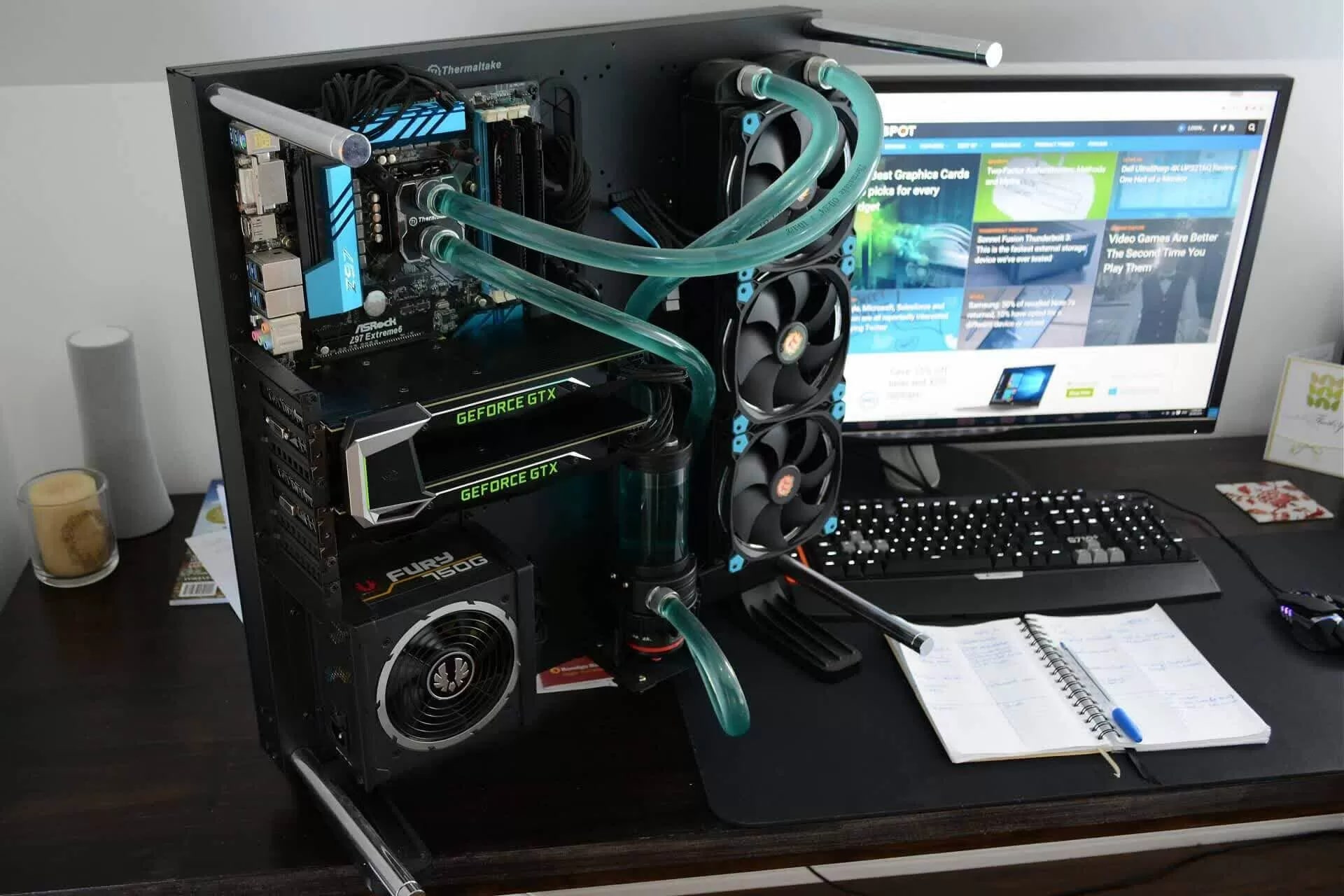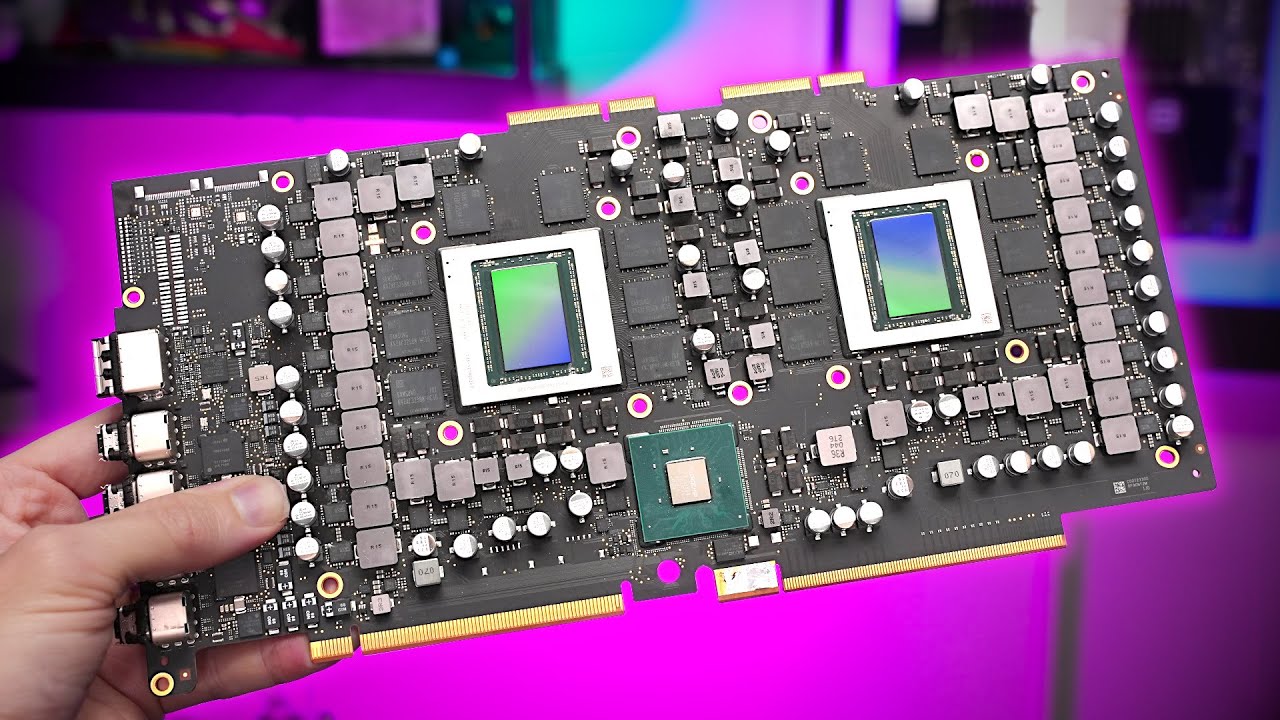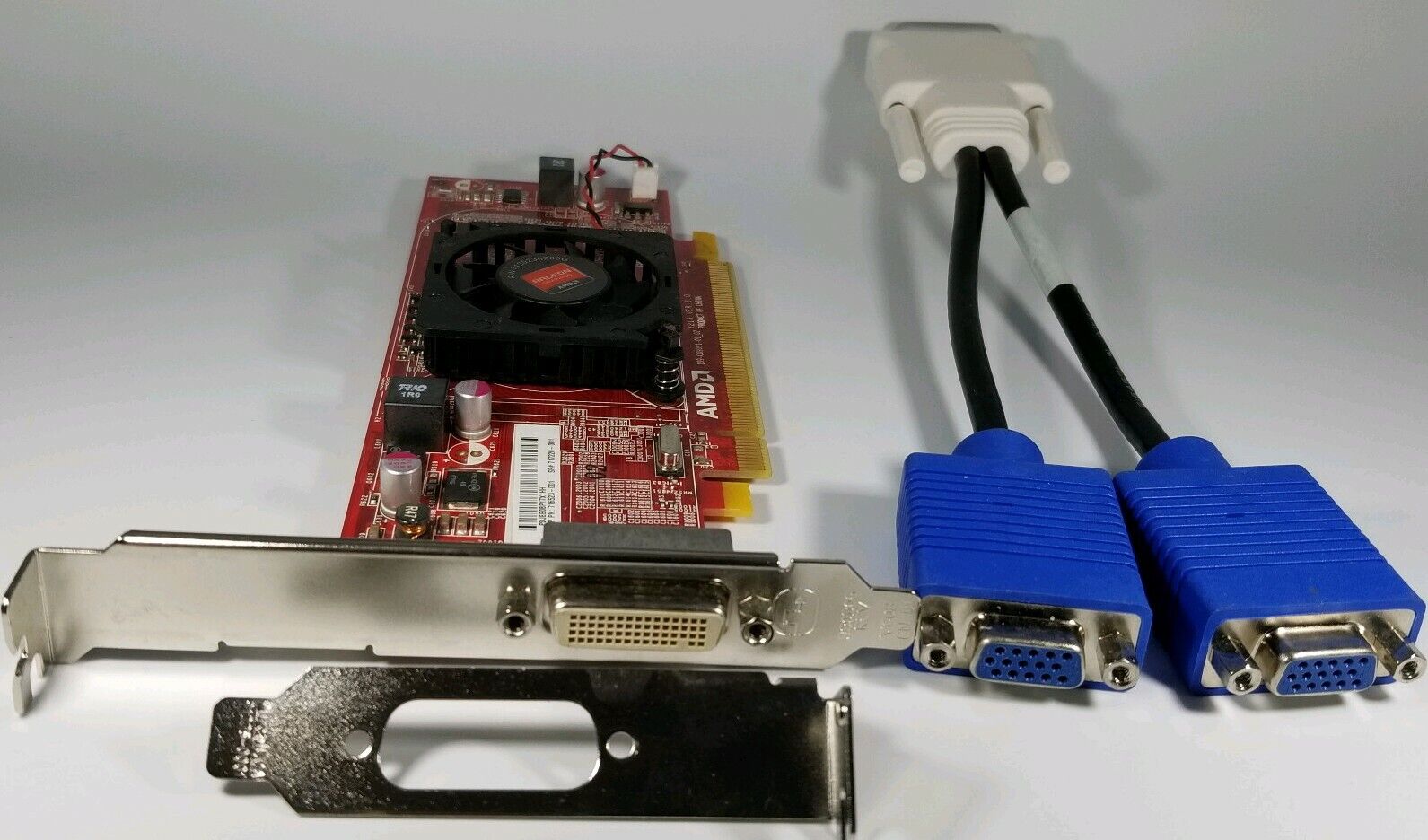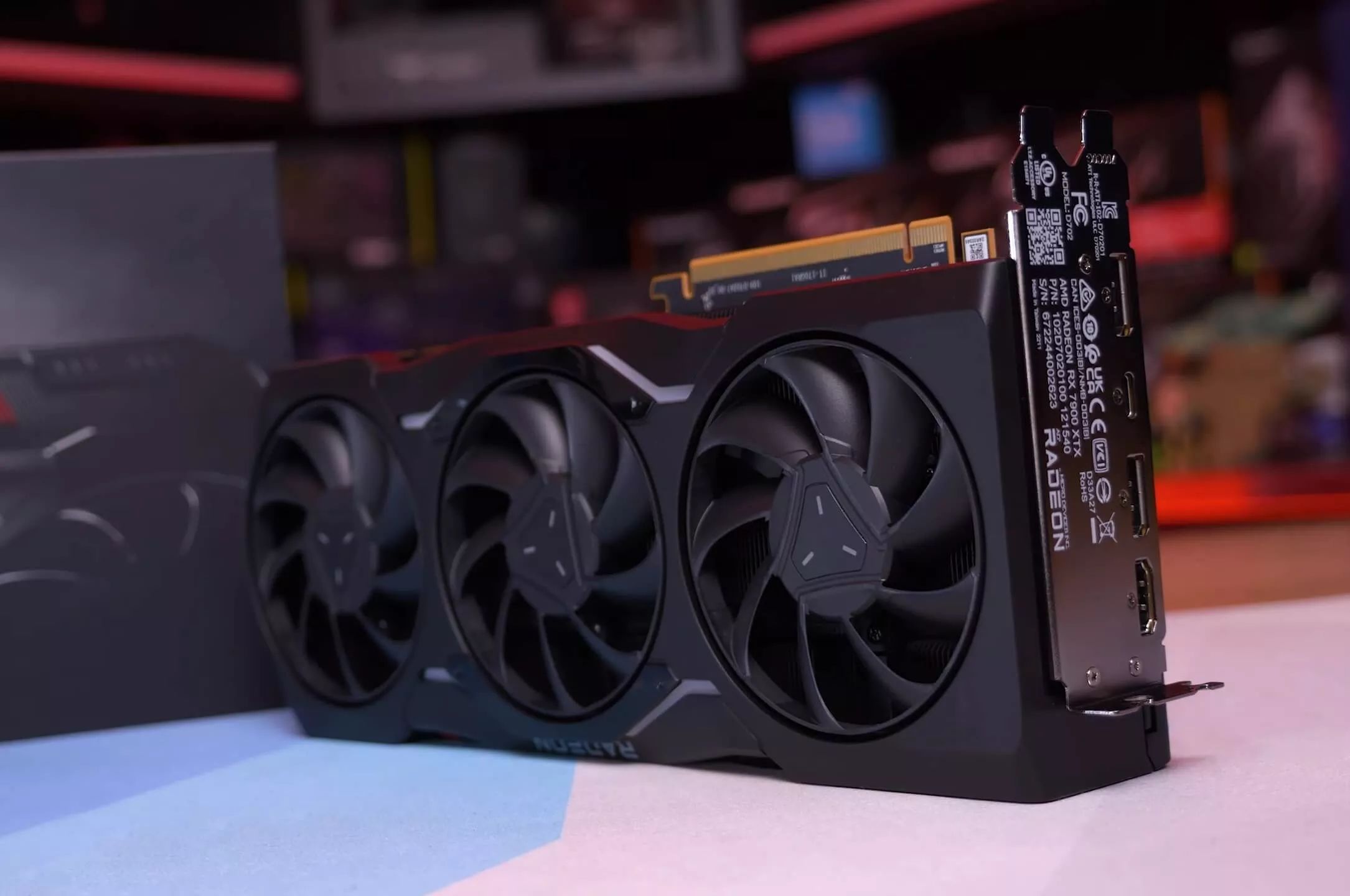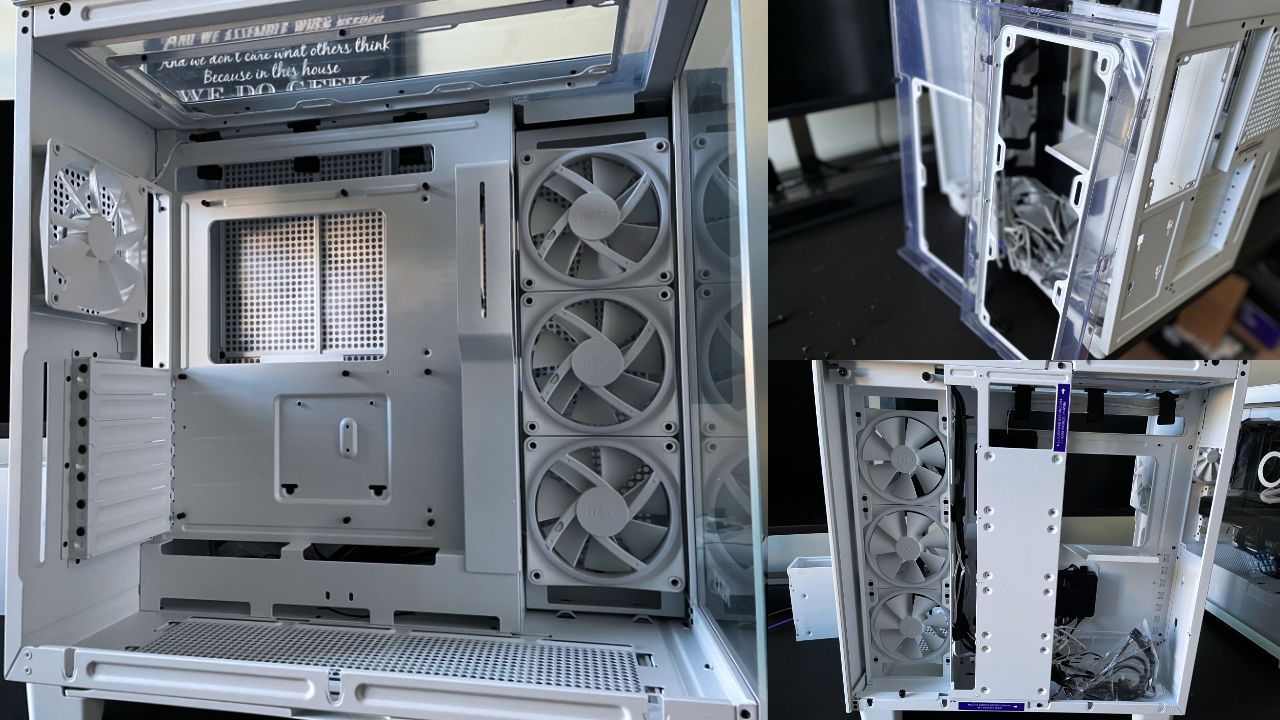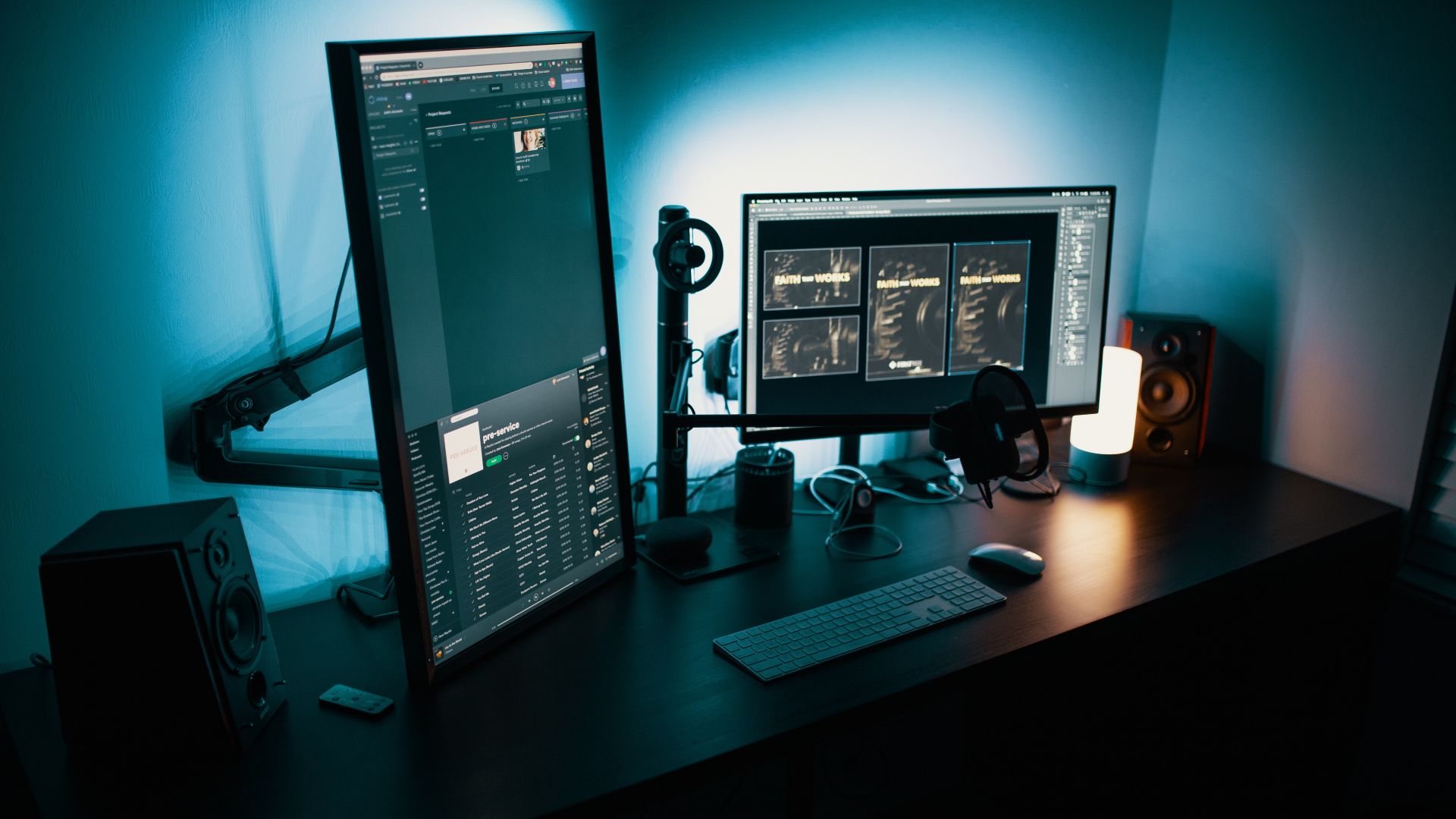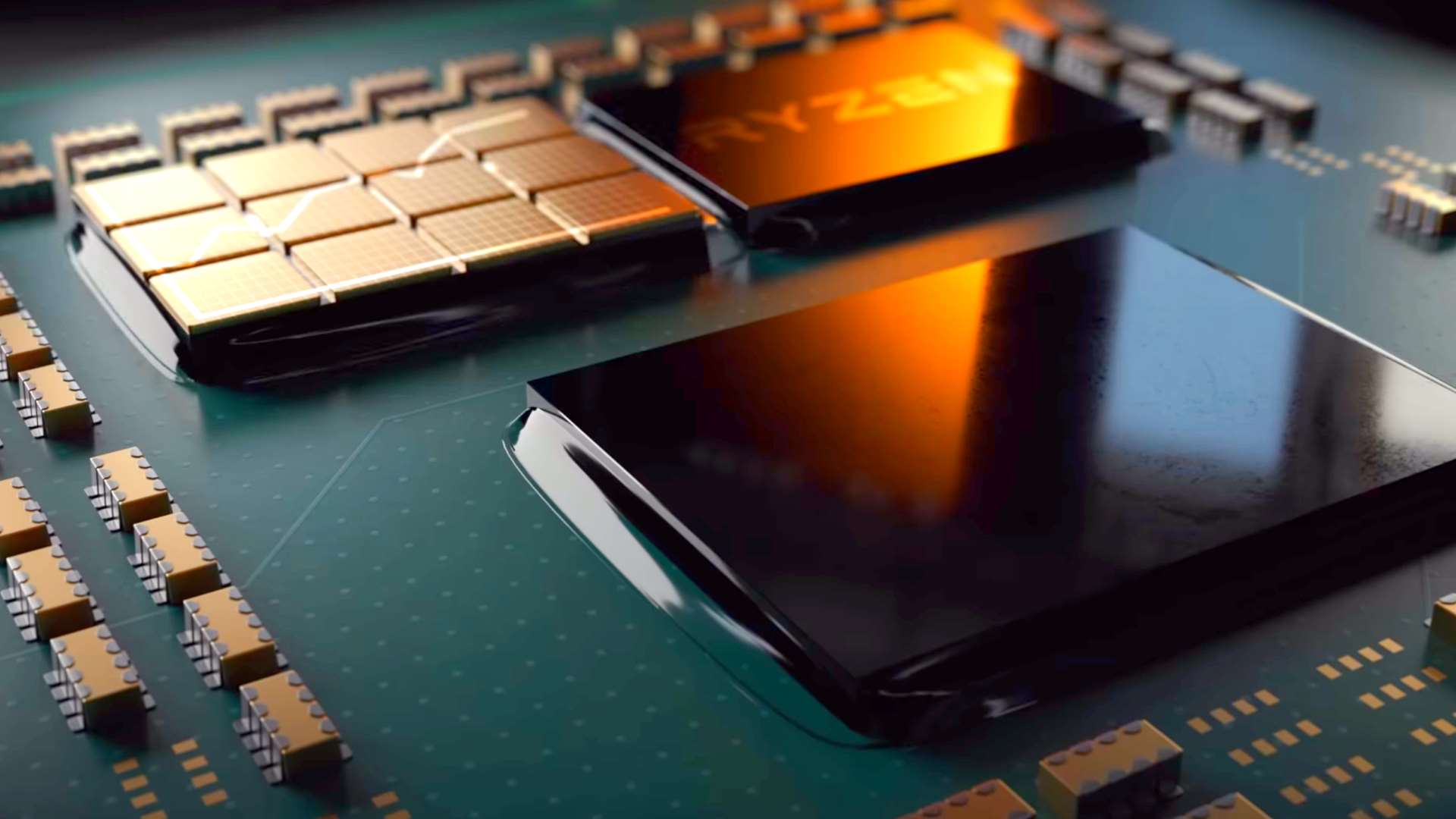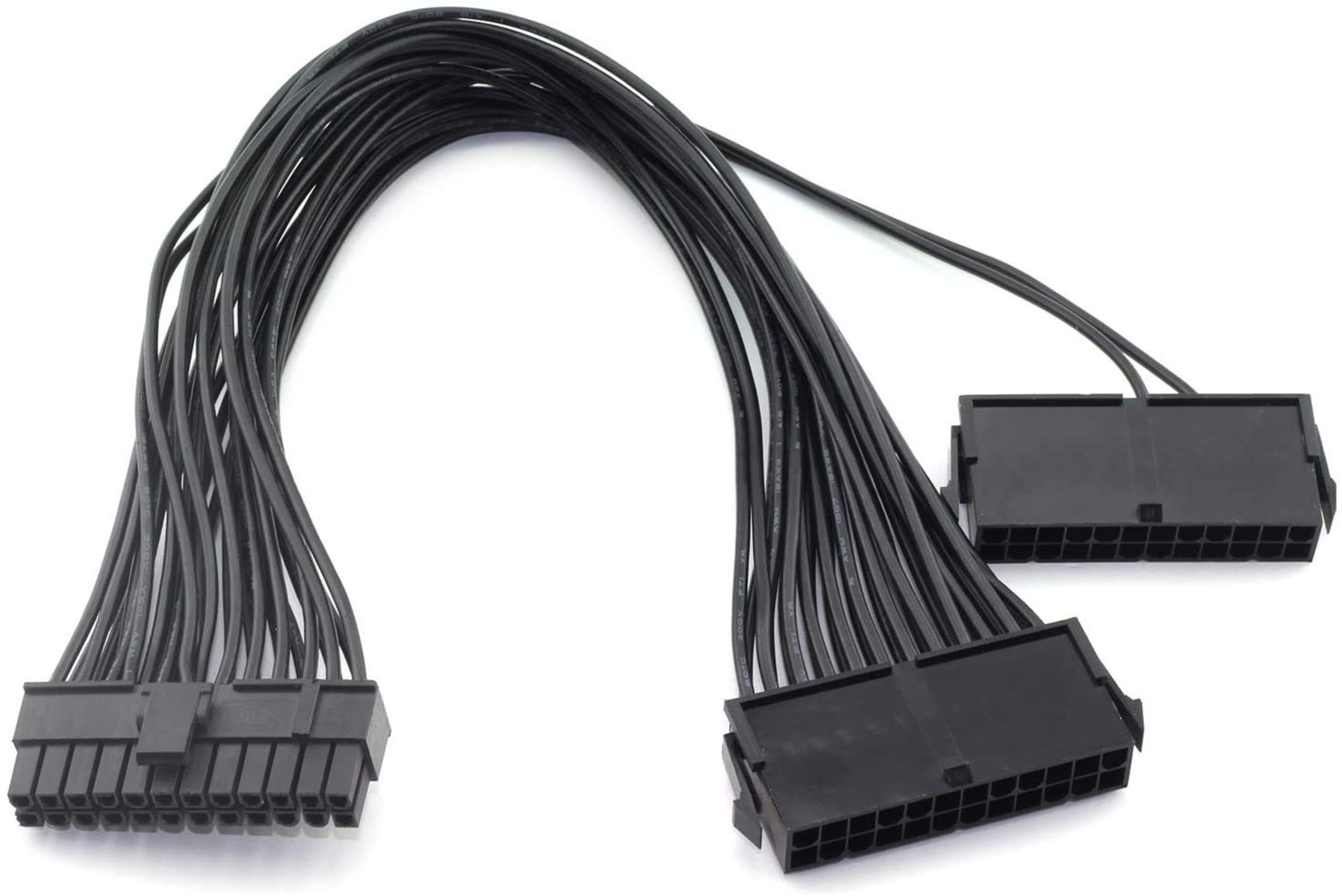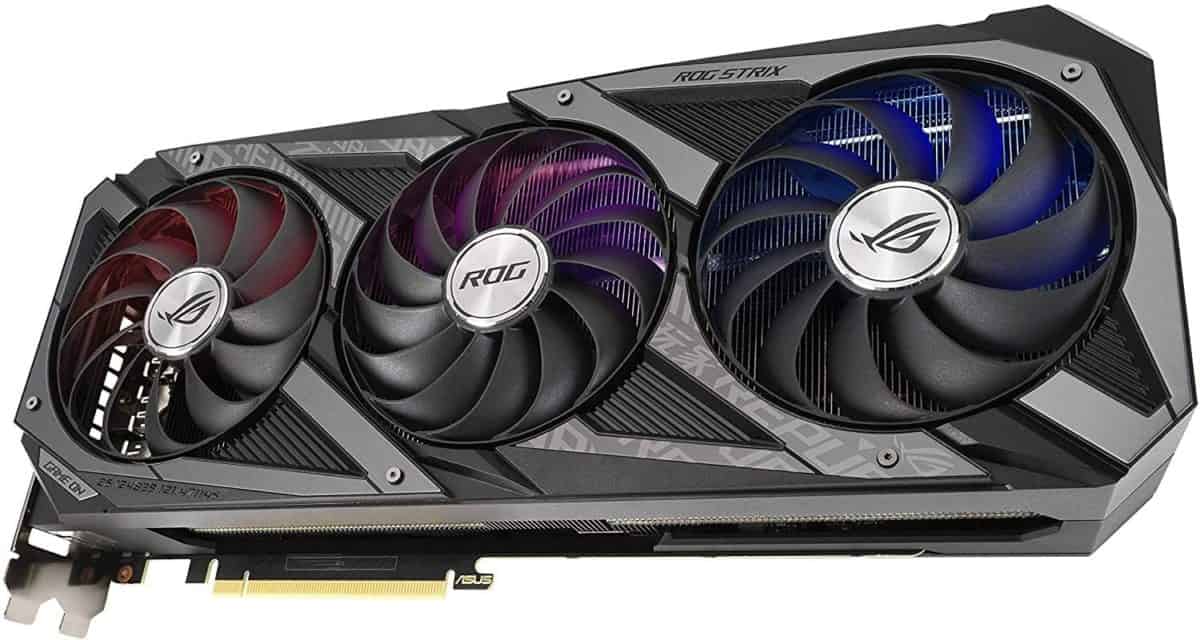Introduction
Are you a gaming enthusiast or someone who uses graphics-intensive applications? If so, you might have heard of dual graphics cards. In the world of computer hardware, a dual graphics card configuration has become increasingly popular for its ability to enhance graphics performance and deliver a more immersive gaming or visual experience.
But what exactly is a dual graphics card? How does it work, and what are the benefits and drawbacks of using one? In this article, we will explore the world of dual graphics cards and delve into the various aspects of this technology.
A dual graphics card setup involves combining two graphics cards in a single system to enhance overall graphics performance. It allows your computer to harness the power of two GPUs (Graphics Processing Units) working together to render graphics and process visual information faster and more efficiently.
Typically, a dual graphics card configuration consists of two identical graphics cards from the same manufacturer. However, some setups may involve mixing different graphics cards, although this can introduce compatibility and performance issues that may need to be addressed.
In the next section, we will take a closer look at how a dual graphics card configuration actually works.
What is a Dual Graphics Card?
A dual graphics card, as the name suggests, refers to a configuration in which two graphics cards are used together in a single computer system. This setup is commonly employed by gamers, video editors, and other professionals who require significant graphics processing power.
The primary purpose of a dual graphics card setup is to enhance the system’s graphics performance, allowing for smoother gameplay, faster video rendering, and improved visual quality. By combining the computational power of two GPUs, the system can handle more complex graphics tasks and deliver higher frame rates, resulting in a more immersive and visually stunning experience.
One of the key advantages of a dual graphics card configuration is the ability to achieve higher resolutions and graphics settings. This is particularly beneficial for gamers who want to play the latest titles at maximum detail levels or content creators who work with high-resolution videos and graphics. With dual graphics cards, the workload is divided between the two GPUs, allowing for better performance and reduced rendering times.
Furthermore, dual graphics card setups can also support multiple monitor setups, enabling users to have a more extensive and immersive screen space. This is especially useful for professionals who require a large workspace or gamers who enjoy multi-monitor gaming setups.
It’s important to note that not all computer systems are compatible with dual graphics card setups. You need to have a motherboard and power supply that can support multiple graphics cards. Additionally, the graphics cards themselves need to support either NVIDIA SLI (Scalable Link Interface) or AMD CrossFire technologies, which allow for the synchronization and sharing of the graphics workload between the GPUs.
In the next section, we will explore how a dual graphics card setup actually works, shedding light on the underlying mechanisms that enable this powerful configuration.
How Does a Dual Graphics Card Work?
A dual graphics card configuration works by combining the processing power of two GPUs to handle graphics-intensive tasks more efficiently. The GPUs work in tandem to divide the workload, resulting in improved performance and faster rendering times.
There are two main technologies that enable dual graphics card setups: SLI (Scalable Link Interface) and CrossFire. SLI is developed by NVIDIA for their graphics cards, while CrossFire is developed by AMD. These technologies allow the GPUs to communicate and share the graphics workload between each other.
In a dual graphics card setup, the primary GPU (usually referred to as the master GPU) takes charge of rendering most of the graphics information. It handles the initial processing and sends the necessary data to the secondary GPU (slave GPU) for further computation. The slave GPU then completes the rendering process and sends the final output to the display.
To enable this communication between the GPUs, an interconnect bridge is used. This bridge is a physical connector that connects the SLI or CrossFire ports on the graphics cards. It facilitates the exchange of data and synchronization between the GPUs, ensuring that the graphics rendering is smooth and seamless.
It’s worth mentioning that the performance improvement achieved in a dual graphics card setup varies depending on the application or game being run. Some applications and games are specifically optimized to take advantage of dual GPUs, resulting in significant performance gains. However, not all applications can make use of the dual graphics card configuration effectively, and in some cases, it may even result in decreased performance or compatibility issues.
Furthermore, the effectiveness of a dual graphics card setup also depends on the scalability of the application or game being used. While some applications may scale well with multiple GPUs, others may not show a significant improvement beyond a certain point. Therefore, it’s essential to consider the specific software requirements and compatibility before opting for a dual graphics card configuration.
In the next section, we will explore the benefits of using a dual graphics card setup, highlighting the advantages that users can expect from this powerful configuration.
Benefits of Using a Dual Graphics Card
Using a dual graphics card configuration can offer several benefits, especially for gamers and professionals who require high-performance graphics processing. Let’s explore some of the advantages associated with utilizing a dual graphics card setup:
1. Enhanced Graphics Performance: The primary advantage of using a dual graphics card setup is the significant boost in graphics performance. With two GPUs working together, the system can handle more demanding graphics tasks, resulting in smoother gameplay, faster video rendering, and improved overall visual quality. This is particularly beneficial for gamers who want to maximize their gaming experience by playing games at higher resolutions and detail settings.
2. Increased Frame Rates: Dual graphics cards can deliver higher frame rates, allowing for seamless and immersive gaming. The workload is shared between the GPUs, enabling faster computations and smoother graphics rendering. This not only improves gameplay but also reduces issues such as stuttering or lag.
3. Support for Multiple Monitors: Dual graphics card setups often support multiple monitor configurations. This means users can enjoy a more extensive screen space, whether for gaming, content creation, or multitasking purposes. Having multiple monitors enhances productivity and provides a more immersive visual experience.
4. Scalability and Future-proofing: Opting for a dual graphics card setup allows for scalability and future-proofing of your system. In the future, if you find that your system’s graphics performance is not meeting your requirements, you have the option to add another GPU to further boost graphics processing power. This scalability ensures that your system can adapt to the latest graphics-intensive applications and games.
5. Rendering and Content Creation Efficiency: Content creators, such as video editors, graphic designers, and 3D modelers, can greatly benefit from a dual graphics card setup. These professionals deal with complex visual tasks that require significant computational power. With dual GPUs, rendering times can be reduced, enabling faster content creation and more efficient workflow.
6. Competitive Advantage in Gaming: For serious gamers, having a dual graphics card setup can provide a competitive advantage. With improved graphics performance and higher frame rates, gamers can have a smoother and more responsive gaming experience. This can make a difference in multiplayer games where split-second reactions and faster rendering give players an edge.
While there are clear advantages to using a dual graphics card configuration, it’s important to consider the downsides as well. In the next section, we will explore the potential disadvantages and challenges associated with using a dual graphics card setup.
Disadvantages of Using a Dual Graphics Card
While a dual graphics card configuration has its benefits, there are also several disadvantages and challenges to consider before opting for this setup:
1. Increased Power Consumption: Using two graphics cards means an increase in power consumption. Dual GPUs require more power to operate, which can result in higher electricity bills and potentially require a higher wattage power supply. Additionally, the increased power draw generates more heat, necessitating better cooling solutions to maintain system stability.
2. Compatibility and Driver Support: Not all games, applications, or software are designed to fully utilize a dual graphics card setup. Some may not support or be optimized for SLI (Scalable Link Interface) or CrossFire configurations, resulting in little to no performance improvement. It’s important to check compatibility and driver support for specific software before investing in a dual graphics card setup.
3. Potential for Micro-Stuttering: In some cases, dual graphics card setups can result in micro-stuttering, which is a slight delay or inconsistency in frame delivery. This can be caused by differences in rendering time between the two GPUs or synchronization issues. Micro-stuttering can impact the smoothness of the gaming experience and decrease overall visual quality.
4. Higher Cost: Building a dual graphics card setup can be a costly endeavor. It involves purchasing two graphics cards, a compatible motherboard, and potentially a more powerful power supply. This added cost might outweigh the performance benefits, especially for casual gamers or individuals with budget constraints.
5. Space and Heat Constraints: The physical space required to accommodate two graphics cards can be a challenge, especially in smaller form factor cases. Additionally, dual graphics card setups generate more heat, which can affect system stability if not properly managed. Sufficient airflow and cooling solutions are essential to maintain optimal operating temperatures.
6. Limited Future Compatibility: Graphics card technology evolves rapidly, and newer graphics cards may not be compatible with older dual graphics card configurations. As technology advances, investing in a single, more powerful graphics card may provide a better long-term solution than relying on a dual graphics card setup, which could become outdated sooner.
It’s important to carefully consider these disadvantages and assess your specific needs before deciding whether a dual graphics card setup is the right choice for you. Taking into account factors such as budget, compatibility, power consumption, and expected performance benefits will help you make an informed decision.
In the next section, we will explore different types of dual graphics card configurations that users can consider for their specific needs.
Types of Dual Graphics Card Configurations
There are several types of dual graphics card configurations that users can consider based on their specific needs and hardware compatibility. Let’s explore some of the common configurations:
1. NVIDIA SLI (Scalable Link Interface): SLI is a technology developed by NVIDIA that enables the synchronization of multiple NVIDIA graphics cards. SLI configurations can range from two GPUs working together (known as 2-way SLI) up to four GPUs (4-way SLI). This configuration is compatible with certain NVIDIA graphics cards and requires a compatible SLI-ready motherboard.
2. AMD CrossFire: CrossFire is the AMD equivalent of NVIDIA SLI and allows for the combination of multiple AMD graphics cards. Similar to SLI, CrossFire configurations can range from 2-way to 4-way setups, depending on the motherboard’s compatibility. AMD CrossFire offers users the flexibility to mix and match different AMD graphics card models in some cases.
3. Dual GPU Graphics Cards: Some graphics cards come with dual GPUs built into a single physical card. These dual GPU cards, such as the NVIDIA GeForce GTX 690 or the AMD Radeon R9 295X2, eliminate the need for a separate bridge connector and provide a compact solution for users who want to harness dual GPU performance without the hassle of setting up and configuring multiple cards.
4. Mixed GPU Configurations: While it is typically recommended to use identical graphics cards for dual configurations, some systems allow mixing different GPU models or even different brands. However, using mixed GPUs can introduce compatibility and driver issues, potentially limiting the performance improvements. Users should thoroughly research and ensure compatibility before considering a mixed GPU configuration.
5. External Graphics Enclosures: In some cases, users may opt for an external graphics enclosure, such as the Razer Core or Alienware Graphics Amplifier. These enclosures allow users to connect an external graphics card to their laptop or small form factor desktop, expanding graphics performance without the need for a dual graphics card setup internally.
It’s important to note that the availability and compatibility of these configurations can vary based on the specific graphics cards, motherboard models, and technologies employed. Users should consult the documentation and specifications of their hardware to determine the viable options for their system.
Now that we’ve explored the different types of dual graphics card configurations, let’s move on to the next section, where we will discuss the considerations and factors to keep in mind when choosing the right dual graphics card for your needs.
Choosing the Right Dual Graphics Card for Your Needs
When it comes to selecting the right dual graphics card for your needs, there are several factors to consider. These considerations will help you make an informed decision and ensure compatibility and optimal performance. Let’s explore these factors:
1. Purpose and Usage: Determine how you plan to use your dual graphics card setup. Are you primarily a gamer, a content creator, or do you have other graphics-intensive tasks in mind? Different applications and games have varying requirements, so understanding your usage will help you narrow down the suitable choices.
2. Budget: Consider your budget for the graphics card setup. Dual graphics card configurations can be expensive, considering the cost of two GPUs, a compatible motherboard, and potentially a higher wattage power supply. Assess your budget to ensure you can afford the necessary components without compromising other essential components of your system.
3. Compatibility and Motherboard Support: Check the compatibility of your motherboard with dual graphics card setups. Not all motherboards support SLI or CrossFire configurations, so ensure that your motherboard has the necessary PCIe slots and supports the specific technology required for your graphics cards. Consult the manufacturer’s documentation or website for compatibility information.
4. Power Supply Requirements: Dual graphics cards require additional power to operate. Verify that your power supply can handle the increased power draw by checking the wattage and the availability of multiple PCIe power connectors. It’s essential to ensure that your power supply can provide sufficient power to both graphics cards and other system components.
5. Cooling and Airflow: Dual GPU setups generate more heat than single GPU setups. Assess the airflow in your system case and consider additional cooling solutions, such as extra case fans or liquid cooling, to maintain optimal temperatures. Overheating can lead to reduced performance, system instability, and decreased lifespan of your graphics cards.
6. Future Upgradability: Consider whether future upgradability is important to you. If you anticipate upgrading your graphics card in the future, ensure that the dual graphics card setup is compatible with newer graphics card models. This will help future-proof your system and allow for easier upgrades down the line.
7. Software and Application Support: Research and confirm that the software and applications you plan to use fully support dual graphics card configurations. Some applications and games may not take full advantage of the additional GPU power or may not be optimized for SLI or CrossFire. Look for user reviews, forums, or official documentation to verify compatibility and performance gains.
8. Brand Preference and Warranty: Consider your brand preference and warranty options when selecting dual graphics cards. Different manufacturers offer varying levels of customer support and warranty coverage. Read reviews and consider factors such as reliability, customer service, and product reputation when deciding on a specific brand.
By taking these factors into account, you can make an informed decision when choosing the right dual graphics card setup that aligns with your needs, budget, and system compatibility. Remember to thoroughly research and compare different models before making a final purchase.
In the next section, we will discuss the setup and configuration process of a dual graphics card system, helping you understand how to get started with your setup.
Setting up and Configuring a Dual Graphics Card
Setting up and configuring a dual graphics card system requires careful attention to detail and proper installation procedures. Follow these steps to ensure a successful setup:
1. Compatibility Check: Before purchasing the graphics cards, ensure that they are compatible with your motherboard and support the desired dual graphics card technology (SLI or CrossFire). Check the manufacturer’s specifications and documentation for compatibility information.
2. Power Supply Capacity: Verify that your power supply has sufficient wattage to support the dual graphics card setup. Graphics cards can consume a significant amount of power, so consult the power supply manufacturer’s guidelines and ensure that it has enough PCIe power connectors for both cards.
3. Physical Installation: Turn off your computer and unplug the power cable. Open the computer case and locate the PCIe slots on the motherboard. Insert the first graphics card into the primary PCIe slot and firmly secure it with the retention mechanism. If using an SLI or CrossFire bridge connector, attach it to the appropriate connectors on the graphics cards.
4. Power Connection: Connect the necessary PCIe power cables from your power supply to both graphics cards. Ensure that each card is receiving sufficient power by securely connecting the power cables to the designated connectors on each card.
5. Driver Installation: Turn on your computer and install the latest graphics card drivers from the respective manufacturer’s website. These drivers will enable proper communication and synchronization between the graphics cards. Follow the manufacturer’s instructions for the driver installation process.
6. Configuration: Once the drivers are installed, access the graphics card control panel software. For SLI configurations, use the NVIDIA Control Panel, and for CrossFire setups, use the AMD Catalyst Control Center or the newer AMD Radeon Software. Configure the graphics cards to operate in the desired mode (e.g., SLI or CrossFire) to enable optimal performance.
7. Testing and Optimization: After configuring the dual graphics card setup, run performance tests and benchmarks to ensure that the graphics cards are working together effectively. Monitor temperatures, fan speeds, and system stability to identify any potential issues and make necessary adjustments, such as increasing airflow or adjusting fan speeds.
8. Updates and Troubleshooting: Regularly update your graphics card drivers and software to ensure compatibility with the latest games and applications. If you encounter any issues with your dual graphics card setup, consult the manufacturer’s support resources, online forums, or contact customer support for troubleshooting assistance.
It’s important to note that specific setup steps and configuration options may vary depending on the manufacturer and the dual graphics card technology being used. Always refer to the documentation and guidelines provided by the graphics card and motherboard manufacturers for the most accurate and up-to-date instructions.
With your dual graphics card system set up and configured, you can now enjoy enhanced graphics performance and an improved visual experience in demanding applications and games.
In the next section, we will discuss some common issues that users may encounter with dual graphics card setups and provide troubleshooting tips to resolve them.
Troubleshooting Common Issues with Dual Graphics Cards
While dual graphics card setups can provide significant performance enhancements, users may encounter some common issues that can affect the overall experience. Here are some troubleshooting tips to help address these issues:
1. Driver Issues: Ensure that you have the latest graphics card drivers installed. Outdated or incompatible drivers can cause performance issues or system instability. Visit the manufacturer’s website and download the latest drivers specific to your graphics cards and operating system.
2. Unstable System: If you experience system crashes or instability after setting up dual graphics cards, it may be due to insufficient power supply or overheating. Verify that your power supply can handle the power demands of both GPUs and check that your system is adequately cooled. Consider upgrading your power supply or adding additional cooling solutions if necessary.
3. Micro-Stuttering: Micro-stuttering, characterized by intermittent frame inconsistencies, can occur in dual graphics card setups. Adjusting graphics card settings, such as enabling vertical sync or reducing graphics settings in specific games, may help alleviate this issue. Alternatively, some games may have built-in settings or patches to address micro-stuttering.
4. Inconsistent Performance: If you notice inconsistent performance across different games or applications, ensure that the specific software supports dual graphics card setups. Some games may not be optimized for SLI or CrossFire configurations, resulting in diminished or no performance improvement. Check the game’s documentation or consult user forums for specific settings or patches that may improve compatibility and performance.
5. Display Artifacts: Display artifacts, such as flickering, screen tearing, or unusual visual distortions, can occur in dual graphics card setups. Try adjusting the graphics card settings, such as enabling vertical sync or adjusting anti-aliasing options, to eliminate these artifacts. If the issue persists, ensure that your graphics cards and cables are securely connected, and try testing the system with a different display device if possible.
6. Compatibility Issues: Dual graphics card setups can encounter compatibility issues with certain software applications or hardware configurations. Ensure that your graphics cards, motherboard, and other system components are compatible with each other and meet the necessary requirements for dual graphics card configurations. Check the manufacturer’s documentation and online resources for information on known compatibility issues or updates.
7. Overclocking Stability: If you have overclocked your graphics cards, it may affect stability in a dual graphics card setup. Consider reverting to default clock speeds and gradually proceed with overclocking while testing for stability at each step. Monitor temperatures and ensure that your cooling solution can handle the increased heat generated during overclocking.
8. Clean Installation of Drivers: If you are experiencing persistent issues, performing a clean installation of the graphics card drivers may help. Use tools provided by the graphics card manufacturer to completely remove the existing drivers, followed by a fresh installation of the latest drivers. This can help eliminate any conflicts or corrupted files that may be causing issues.
If you continue to experience issues with your dual graphics card setup, consider seeking assistance from the graphics card manufacturer’s technical support or consulting online forums and communities dedicated to graphics card configurations. These resources provide valuable insights and solutions from experienced users who may have encountered and resolved similar issues.
With proper troubleshooting, you can overcome common problems and fully optimize your dual graphics card system for exceptional graphics performance.
In the final section, we will recap the main points discussed throughout this article and conclude our exploration of dual graphics cards.
Conclusion
In conclusion, a dual graphics card setup can significantly enhance graphics performance and deliver an immersive visual experience for gamers, content creators, and professionals who rely on intensive graphics processing. By combining the computational power of two GPUs, dual graphics card configurations offer improved frame rates, higher resolutions, and faster rendering times.
However, it’s crucial to carefully consider the benefits and drawbacks of using a dual graphics card setup. While there are advantages such as enhanced graphics performance, increased frame rates, and support for multiple monitors, there are also challenges to consider, including higher power consumption, potential compatibility issues, and increased costs.
Choosing the right dual graphics card configuration involves evaluating factors such as usage, budget, compatibility, power supply capacity, and future upgradability. Understanding the specific requirements of your applications and games will help you make an informed decision and ensure that the dual graphics card setup aligns with your needs.
Setting up and configuring a dual graphics card system requires attention to detail, including proper compatibility checks, physical installation, driver installation, and configuration. Troubleshooting common issues that may arise, such as driver issues, stability problems, and compatibility issues, can ensure optimal performance and stability of the dual graphics card setup.
With careful consideration, proper installation, and troubleshooting, users can harness the power of dual graphics cards to unlock impressive visual experiences and unleash the full potential of their gaming or graphics-intensive applications.
As technology continues to evolve, it is always advisable to stay updated with the latest hardware and software developments. Regularly updating graphics card drivers, monitoring system temperatures, and seeking assistance from manufacturer support or user communities can help address potential challenges and ensure the continued enjoyment of a dual graphics card setup.
We hope that this article has provided valuable insights into the world of dual graphics cards, helping you make informed decisions and optimize your graphics performance.







